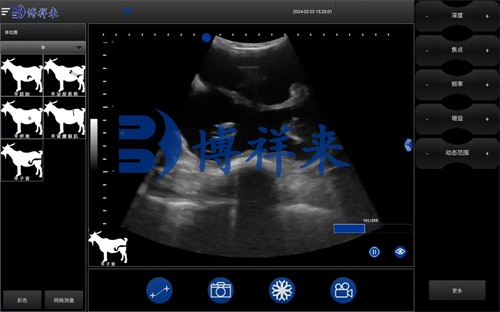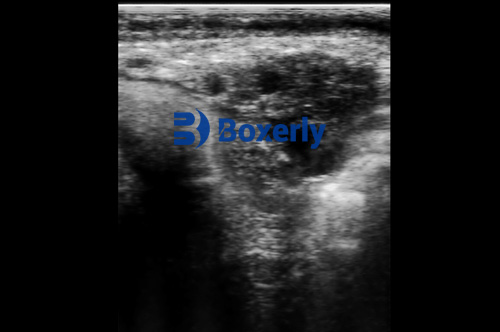Ultrasound imaging has become an essential tool in various fields — from medical diagnostics to livestock management and veterinary care. Its non-invasive nature, real-time imaging capabilities, and relative affordability make it ideal for daily use. But a critical factor that significantly affects the quality and type of imaging is the frequency of the ultrasound waves used.

Swedish client received the BXL ultrasound equipment
In diesem Artikel, we will explore how frequency impacts ultrasound imaging, why choosing the correct frequency matters, and how to select the appropriate device for different applications, particularly in animal husbandry and farm management.
Understanding Ultrasound Frequency
In simple terms, frequency refers to the number of sound wave cycles that occur per second, measured in megahertz (Mhz) in ultrasound technology.
-
Low-Frequency Ultrasound (1–5 MHz): Penetrates deeper into tissues but provides lower image resolution.
-
High-Frequency Ultrasound (7–15 MHz or higher): Produces clearer, more detailed images but cannot penetrate as deeply.
Key Concept:
High frequency = better detail, less depth.
Low frequency = deeper penetration, less detail.
Choosing the correct frequency is crucial because it directly affects the quality of the diagnostic image and the success of the examination.

Sheep Ultrasound Images
How Frequency Affects Imaging in Practice
1. Depth of Penetration
Lower frequencies are perfect when deep tissues need to be imaged. Zum Beispiel:
-
Cattle pregnancy diagnosis: The uterus is located deep within the abdomen, especially in larger breeds. Using a probe with a frequency around 3.5–5 MHz ensures sufficient penetration to visualize the fetus.
-
Camel or horse tendon imaging: When scanning tendons close to the surface, a 10–15 MHz probe provides extremely detailed images, which are necessary for diagnosing fine tears or inflammation.
If you choose too high a frequency for a deep structure, the sound waves will dissipate before reaching the target, resulting in a blurry or non-existent image.
2. Image Resolution
Higher frequency transducers provide more precise images because they generate shorter wavelengths. This is critical when you need to detect small structures or subtle abnormalities. Zum Beispiel:
-
Early-stage pregnancy checks in sheep or goats benefit greatly from high-resolution imaging because embryonic structures are tiny at first.
-
Mammary gland inspections in dairy cows use high-frequency probes (10–12 MHz) to detect abscesses, mastitis, or minor tissue changes.
Choosing the Right Frequency for Different Farm Animals
When performing ultrasound imaging on farm animals like cattle, Schweine, Pferde, Schaf, or camels, the goal dictates the frequency selection.
| Animal | Application | Recommended Frequency |
|---|---|---|
| Cattle | Pregnancy check | 3.5–5 MHz |
| Pigs | Early pregnancy detection | 5–7.5 MHz |
| Pferde | Tendon and ligament scan | 10–15 MHz |
| Sheep/Goats | Pregnancy detection | 5–7.5 MHz |
| Camels | Reproductive tract examination | 3.5–5 MHz |
Tip: Always consider the animal’s size, the body part you are imaging, and how deep the structure is located.

vet Ultrasound Images
Modern Innovations: Frequency Ranges and Multi-Frequency Probes
Today’s ultrasound machines, especially leading brands like BXL, offer probes that cover a wide frequency range. Multi-frequency or broadband probes allow the operator to adjust frequency settings during the exam.
Zum Beispiel, a 5–10 MHz probe might be used to scan both deep structures and then shift to a higher frequency for surface details without changing the probe. This versatility saves time and increases diagnostic accuracy, especially when scanning large or multiple animals.
Practical Advice for Farm Ultrasound Users
Whether you are managing a commercial cattle operation or a small mixed-species farm, here are a few guidelines to maximize your ultrasound outcomes:
-
Start with Lower Frequencies for deep imaging. Move to higher frequencies if more detail is required and depth is sufficient.
-
Regularly calibrate your machine to ensure that frequency settings are accurate.
-
Choose probes designed for veterinary or livestock use, as they are built to handle rugged field conditions.
-
Invest in training: Good image quality is a combination of proper equipment and skilled handling.
Bonus Tip: If you are scanning under field conditions where animals might move, portable ultrasound systems with adjustable frequency settings like BXL-V50 series are extremely practical.
Schlussfolgerung
Frequency plays a critical role in ultrasound imaging by balancing the trade-off between penetration depth and image resolution. Selecting the appropriate frequency ensures that you capture clear, diagnostic-quality images, leading to better health outcomes and more efficient farm management.
Whether scanning a cow for pregnancy, evaluating a horse’s tendon injury, or checking reproductive status in camels, understanding how frequency impacts imaging is key to success. Investing in a versatile, high-quality ultrasound device — and knowing how to use frequency to your advantage — will make a significant difference on your farm.